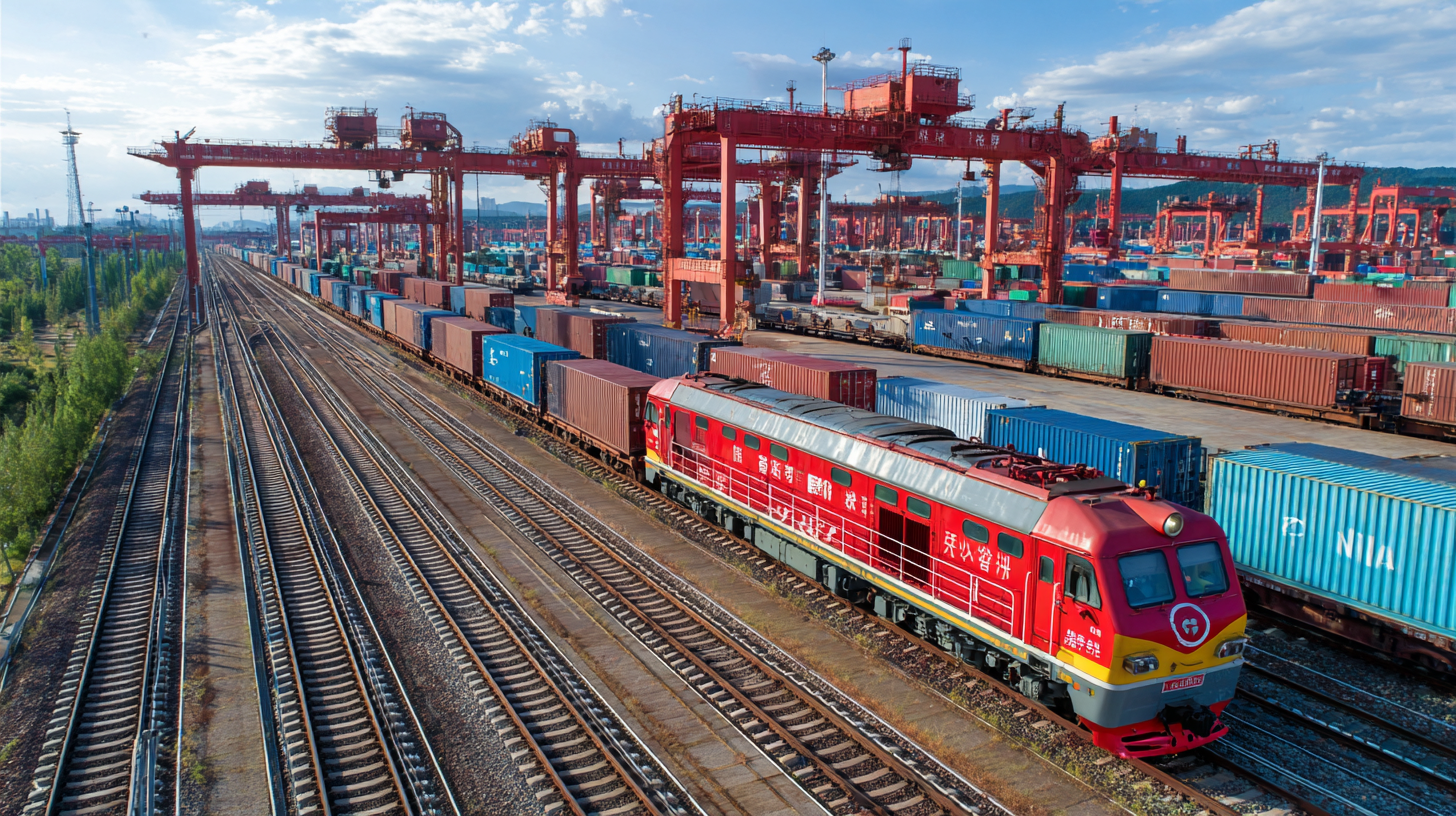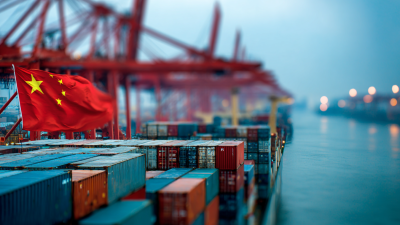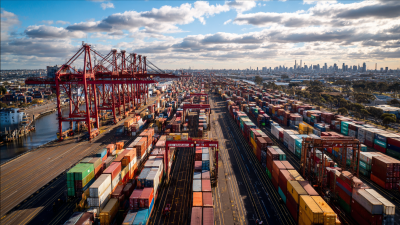The China-Europe Railway has emerged as a pivotal artery in the landscape of global trade, facilitating a swift and efficient connection between Asia and Europe. As nations strive for economic recovery and growth, the railway represents a transformative force, reshaping supply chains and reducing transportation times. This expansive network not only bolsters bilateral trade between China and European countries but also enhances the economic integration of the broader Eurasian region.

In this exploration, we will delve into the multifaceted economic impacts of the China-Europe Railway on global trade dynamics, examining its role in promoting trade volumes, fostering investment opportunities, and challenging traditional maritime routes.
Further, we will analyze the potential socio-economic benefits and challenges that accompany this significant development, providing a comprehensive understanding of its implications for international commerce in the 21st century.
The China Europe Railway, also known as the China Railway Express (CRE), has undergone significant historical development since its inception, playing a pivotal role in trade expansion. The first train from China to Europe departed in 2008, marking the beginning of a new trade corridor that has expanded rapidly over the years.
According to the China State Railway Group, the number of trains operating on this route surged from approximately 17 in 2011 to over 12,000 in 2020, facilitating trade worth nearly $9 billion. This growth underscores the railway's capacity to significantly shorten delivery times compared to sea freight, transforming supply chain logistics between Asia and Europe.
The impact of the China Europe Railway extends beyond mere transport efficiency. Reports from the European Union have highlighted that the railway has stimulated economic activity in both China and Europe by providing businesses with a reliable alternative to traditional shipping routes. As of 2021, it was estimated that the railway accounts for 15% of China’s trade with Europe. Additionally, the network supports the Belt and Road Initiative (BRI), fostering deeper economic ties and accelerating the exchange of goods, technologies, and cultural assets. This integration can be seen in the growth of interconnected logistics hubs, which are vital for meeting the increasing demands of global trade.

The China Europe Railway, part of the Belt and Road Initiative, significantly enhances global trade dynamics by offering key economic benefits to participating countries. Leveraging this rail network reduces logistics costs and transit times, fostering more efficient trade flows. According to a report by the World Bank, for every 1% reduction in transport costs, trade increases by 1.5%. This is particularly beneficial for countries in Central Asia and Eastern Europe, which experience direct access to lucrative markets in China and beyond.
Furthermore, the sustaining connectivity afforded by the China Europe Railway can stimulate local economies through job creation and infrastructure development. A study published by the Asian Development Bank indicates that enhanced transport links have the potential to increase GDP growth in participating regions by up to 5%. This creates a ripple effect, encouraging foreign investments and facilitating exports, thus positioning these nations as critical players in the global supply chain.
Tip: For businesses looking to expand in these emerging markets, leveraging the efficiencies of the China Europe Railway can lead to significant cost savings and improved market reach. Staying informed about the latest trade agreements and infrastructural developments can provide strategic advantages.
The China Europe Railway has emerged as a pivotal component in enhancing supply chain efficiency, significantly reshaping global trade dynamics. Recent industry reports indicate that rail transport can reduce logistical costs by up to 15% compared to traditional modes like air freight. This cost efficiency has encouraged many businesses to integrate rail services into their supply chain strategies, allowing for more competitive pricing and better market access.
Additionally, the railway's operational innovations, such as real-time tracking and advanced scheduling systems, have drastically improved the reliability and speed of cargo transit. According to a study by the International Journal of Transportation, rail freight averages transit times of 15 days from China to Europe, which is substantially faster than shipping via sea. This speed, combined with environmentally friendly transport options, increasingly appeals to companies looking to optimize their supply chains while maintaining sustainability goals. The integration of these logistical innovations illustrates how the China Europe Railway is not only facilitating trade between continents but also setting a new standard for supply chain operations globally.
This chart illustrates the significant increase in global trade volume before and after the introduction of the China Europe Railway. The data indicates a growth from 250 billion USD to 450 billion USD, highlighting the logistical innovations that enhance supply chain efficiency.
The economic landscape of global trade is witnessing a significant transformation, particularly with the emergence of the China-Europe Railway as a competitive alternative to traditional shipping routes. A comparative analysis reveals that while maritime transport remains dominant, the rail corridor offers distinct advantages in terms of speed and reliability. According to industry reports, the China-Europe Railway can reduce transit times between China and Europe to as little as 12 days, compared to 30-40 days for sea freight. This efficiency is increasingly vital for businesses requiring just-in-time delivery, particularly in sectors like electronics and fashion.
Furthermore, the strategic importance of the Middle Corridor, which integrates multiple forms of transport including rail and sea, is growing amid escalating competition between global powers. The International Transport Forum has projected that rail freight capacity along this corridor could expand by 20% in the next decade, signifying its potential to facilitate increased trade volumes between Asia and Europe. This shift reflects not only a reaction to logistical demands but also the geopolitical landscape shaped by initiatives such as China’s Belt and Road Initiative, which aims to enhance connectivity across Eurasia.
| Dimension | China Europe Railway | Traditional Shipping Routes |
|---|---|---|
| Average Transit Time (days) | 10-15 | 30-40 |
| Cost per Container (USD) | 3,000 - 5,000 | 1,500 - 2,500 |
| Carbon Emissions (kg CO2 per container) | 1,200 | 2,500 |
| Reliability (On-time performance %) | 90% | 80% |
| Average Goods Value (USD) | 100,000 | 200,000 |
| Frequency of Service (per week) | 20 | 10 |
The China-Europe Railway, as part of the Belt and Road Initiative, is poised to become a significant catalyst for global trade dynamics. As the geopolitical landscape continues to evolve, the railway's integration into international logistics promises to enhance connectivity between Asia and Europe significantly. Reports indicate that trade volume along the Belt and Road routes could double by 2025, reaching an estimated $2 trillion, indicating that the railway will facilitate not only the movement of goods but also foster economic relationships among partner countries.

Moreover, the interaction between Central Asian nations under the Shanghai Cooperation Organization (SCO) framework is indicative of shifting power dynamics in global trade. The SCO has the potential to reshape economic alliances and promote stability amid ongoing uncertainties. Current analysis predicts a slowdown in global economic growth due to escalating trade tensions and geopolitical risks. However, Central Asia's expanding ties with China, evidenced by increasing bilateral trade figures, further emphasizes the railway's potential in mitigating these risks and enhancing regional cooperation. With the establishment of more efficient trade networks and the strengthening of investment partnerships, the China-Europe Railway is on track to redefine the contours of global trade.







